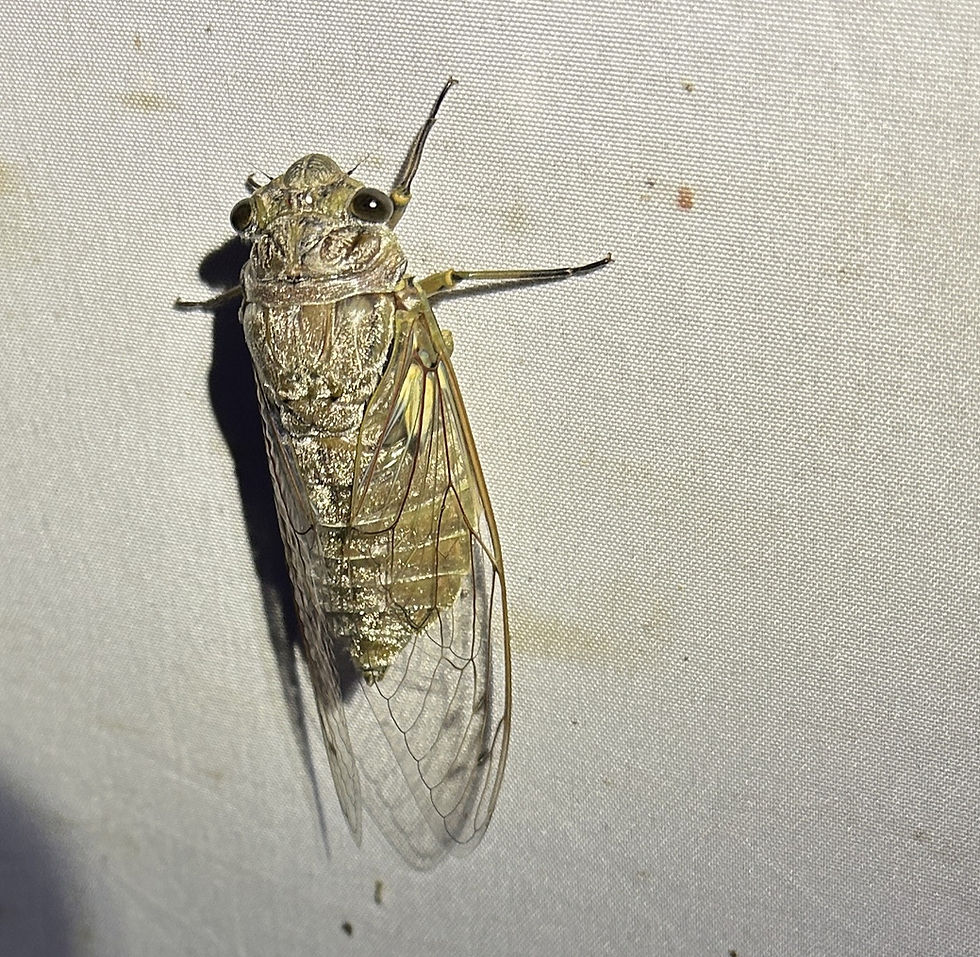Annual cicadas are a part of a typical South Texas summer
- jjvanm
- Aug 16, 2025
- 3 min read

Published in the McAllen Monitor, August 16, 2025
Story and photos by Anita Westervelt
The best time to witness a cicada emerging from its shell is between 4 a.m. and just before sunrise. When the sun comes out, you might not find many cicadas, but it will be fun finding their shells. A cicada’s shed exoskeleton is called an exuvia.

If a cicada nymph is on the move, it is looking for a place to anchor so it can begin to emerge. Fully developed nymphs burrow out of the ground at night, leaving a half-inch hole behind them, according to a Texas A&M AgriLife Extension online Field Guide to Common Texas Insects. The nymphs climb onto tree trunks, low plants and other objects.

Adult cicadas emerge from their last nymphal stage through a crack along the back of their exoskeleton (exuvia) and leave the light brown cast or skin behind. Lucky is the person who has observed a nymph tunnelling out of the ground.
No doubt the bark of tree trunks is the favored ancient medium on which a cicada nymph might choose to anchor. These past few weeks I’ve found many nymphs and emerging cicadas when I check my moth sheet before dawn. Architectural texture, like the stucco siding on our house seems to be a suitable anchor, as is the woven cotton fabric and wooden frame of my moth sheet. I’ve found several nymphs and cicadas on the pavement; I tread cautiously so as not to step on any.
Three superb dog-day cicadas using various mediums in which to secure and emerge are shown below. (Photos by Anita Westervelt)
I have noticed a good number of cicadas emerging from their shell these past couple of weeks, but I don’t hear them singing. Not all of them sing, or if they do, not at human pitch, according to Wikipedia.org.
There are more than 3,000 species of cicadas and each has its own distinct song and behavior.
For such a hardy, solid looking creature, cicadas are quite sensitive to weather. They prefer sunny, warm weather and may sing less intensely or not at all if it is too cool, too hot, rainy, cloudy or windy.
In addition, cicadas recently emerged from the ground need a few days to mature and start singing. Only male cicadas sing and only to attract mates and communicate with other cicadas essential for their reproduction and survival. Birds, dogs, cats, squirrels, rabbits, frogs, fish, raccoons, bats, spiders, other insects and possibly snakes prey on cicadas.
There are 150 or so species of cicada in the U.S., and possibly 54 species of in Texas. There are reportedly 11 cicada species found in the Rio Grande Valley. Our South Texas cicadas are annual, meaning they have unsynchronized development, so some individuals mature in every year, and we hear them every summer. Annual cicadas are harmless to humans and plants.
The giant cicada, Quesada gigas, is the largest and loudest cicada in the Western Hemisphere and is found only in South Texas and further south. Another common annual cicada in Texas, known for its distinctive, resonating song is the superb dog-day cicada, Neotibicen superbus. It is the greenest cicada in the neotibicen genus.













